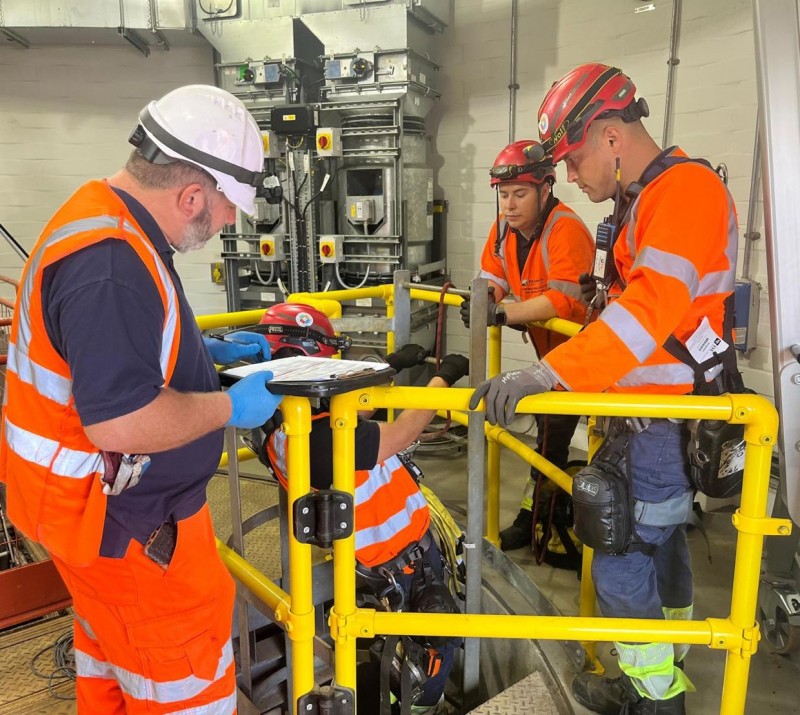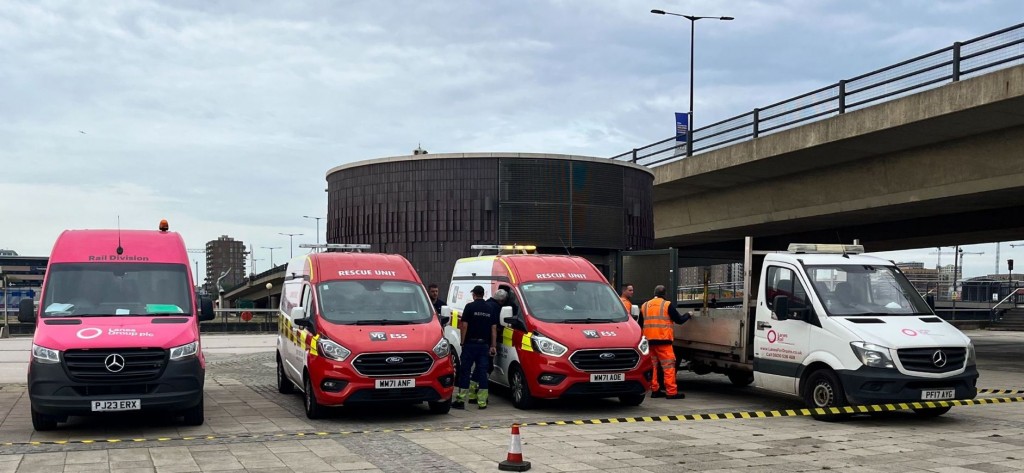Drainage engineers use “exemplar” safety systems to clean deep railway sump

Drainage engineers from Lanes Rail charged with cleaning a sump on London’s newest railway line had to descend a shaft equivalent to the height of an eight-storey building.
The sump in Silvertown, East London, next to London City Airport, was 25 metres deep, making it the deepest wastewater asset of its kind along the 73-mile length of the Elizabeth Line.
Lanes Rail Health, Safety, Quality and Environment Manager Dan Ward worked with Project Manager Aaron Turner to devise a sophisticated safe system of work to protect the four operatives assigned to the task.
Serious hazards
Dan Ward said: “This was one of the deepest shafts Lanes Rail operatives have ever worked in. Our safety systems had to reflect a range of serious hazards our team faced during the three day operation.
“All our drainage engineers had undergone confined space training and we very carefully assessed all eventualities in creating a bespoke risk assessment and method statement for this project.”
Lanes Rail, a division of Lanes Group plc, the UK’s largest drainage and wastewater specialist, was commissioned to carry out the work by Rail for London (RfL), which maintains the Elizabeth Line’s infrastructure.
The seven-metre-diameter concrete ring shaft, called the Connaught Road pump house, contains two sets of pumps that manage surface water from multiple locations along a section of the Elizabeth Line.
Rescue support
The first task was to carry out the work when no rainfall was forecast as the shaft was designed to hold surface water up to half its height during periods of heavy rain.
To reach the sump waste pit beneath the pumps, the Lanes Rail drainage engineers needed to climb down shaft ladders linked together by seven landings.
The engineers wore harnesses and were clipped onto fall arrest lines set up between each landing. They also wore gas monitors and confined space emergency escape sets with mini tanks containing 30 minutes of air.
During the project, the Lanes Rail operatives were supported by a three-person confined space rescue team with full breathing apparatus from health and safety specialist ESS.
One member of the rescue team went down with the Lanes drainage engineers, while two remained on the surface.

Heavy sludge
The shaft had a permanent electric winch to support planned preventative maintenance. This would be used to remove material from the sump, and rescue personnel in case of emergency.
Aaron Turner explained: “Our first task was to inspect and record the condition of all ladders, guardrails and floor assets in the shaft, landing-by-landing to establish that they were safe to use and fit-for-purpose.
“Only then could we send our team down to the bottom of the shaft to do the work to clean the sump pit.”
Over a day and a half, the Lanes team used shovels to remove silt and other debris from the two-metre-deep pit that encompassed the whole of the bottom of the shaft.
The waste material, in the form of heavy sludge, was loaded into one-tonne bags and winched to the surface for safe disposal.
Maintenance guidance
“This was a very successful project, delivered in line with exemplar health and safety standards,” said Aaron Turner.
“No one knew how full the sump was until we got down there. In the event, we removed no more than two tonnes of silt. This will give RfL good guidance for planned maintenance needs going forward.”
The Elizabeth Line, which opened to passengers in May 2022, runs east to west from Abbey Wood, East London, and Shenfield, Essex, to Heathrow Airport, West London, and Reading, Berkshire.







